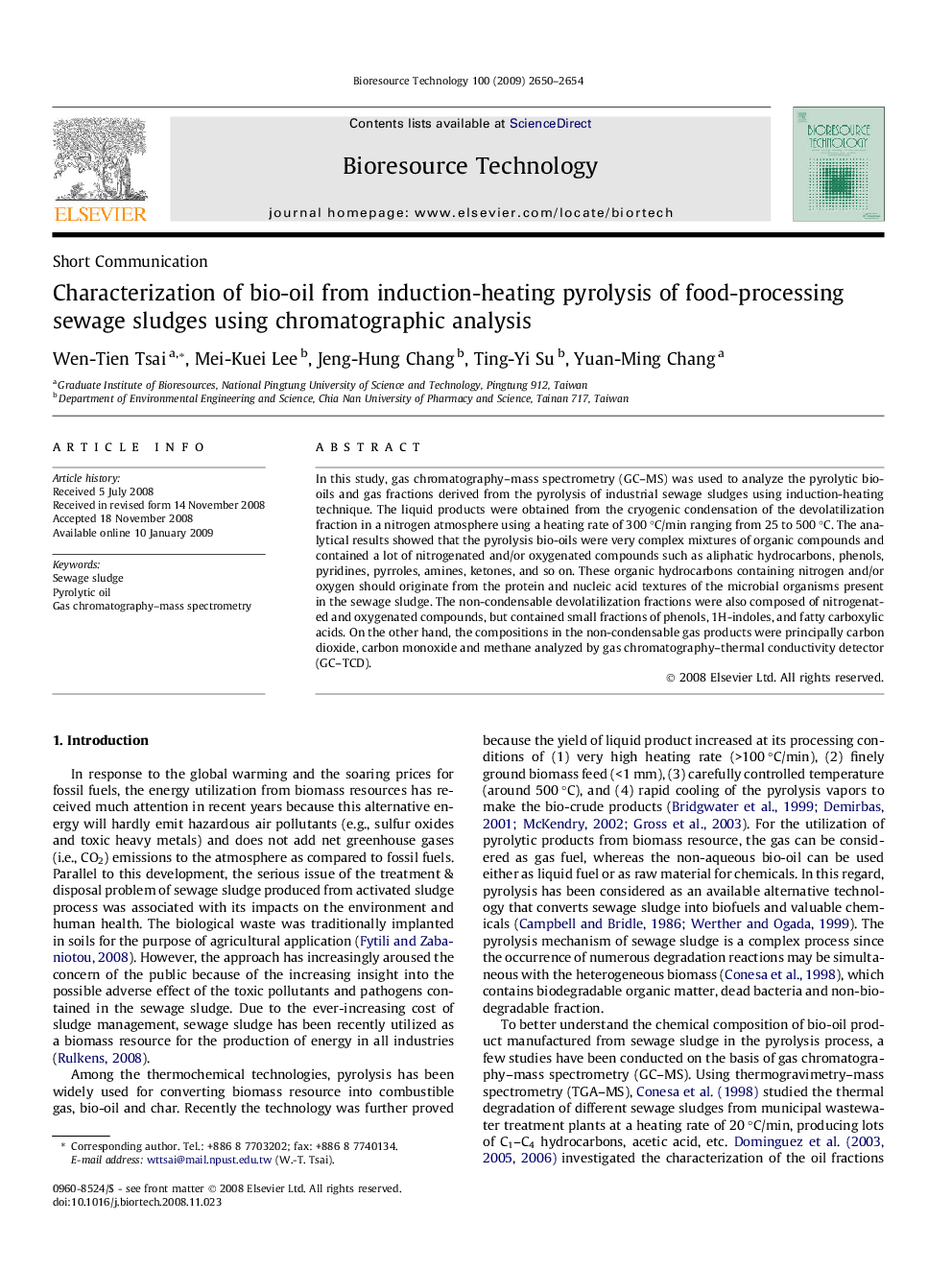| Article ID | Journal | Published Year | Pages | File Type |
|---|---|---|---|---|
| 685720 | Bioresource Technology | 2009 | 5 Pages |
In this study, gas chromatography–mass spectrometry (GC–MS) was used to analyze the pyrolytic bio-oils and gas fractions derived from the pyrolysis of industrial sewage sludges using induction-heating technique. The liquid products were obtained from the cryogenic condensation of the devolatilization fraction in a nitrogen atmosphere using a heating rate of 300 °C/min ranging from 25 to 500 °C. The analytical results showed that the pyrolysis bio-oils were very complex mixtures of organic compounds and contained a lot of nitrogenated and/or oxygenated compounds such as aliphatic hydrocarbons, phenols, pyridines, pyrroles, amines, ketones, and so on. These organic hydrocarbons containing nitrogen and/or oxygen should originate from the protein and nucleic acid textures of the microbial organisms present in the sewage sludge. The non-condensable devolatilization fractions were also composed of nitrogenated and oxygenated compounds, but contained small fractions of phenols, 1H-indoles, and fatty carboxylic acids. On the other hand, the compositions in the non-condensable gas products were principally carbon dioxide, carbon monoxide and methane analyzed by gas chromatography–thermal conductivity detector (GC–TCD).
